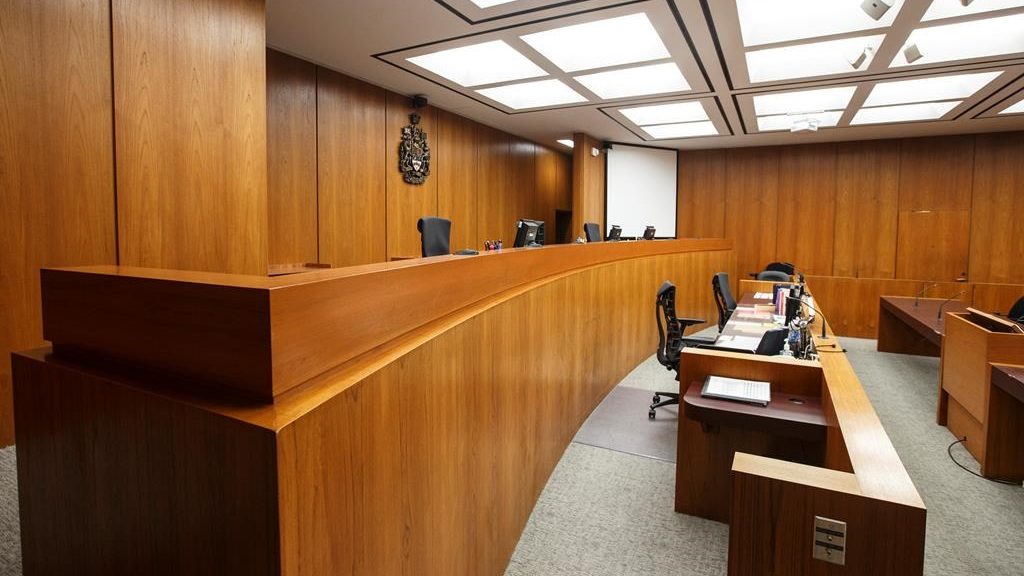Bombardier completes its exit of commercial aviation as it sells C Series stake
Posted February 13, 2020 2:04 pm.
MONTREAL – Bombardier Inc. is selling its remaining stake in the A220 jetliner program, a move that signals its exit from the commercial aviation market and positions the company to better deal with its towering debt load.
The plane-and-train maker said Thursday it has signed an agreement with Airbus SE and the Quebec government that hands Airbus a 75 per cent share in the A220 partnership, up from just over 50 per cent, while Quebec’s stake rises to 25 per cent, from 16 per cent.
In exchange, Airbus gives Bombardier US$591 million, including US$531 million immediately. The agreement also frees Bombardier from $700 million in upcoming spending on the A220, which it launched as the C Series before selling a majority stake to Europe-based Airbus in 2018.
The news comes as Bombardier reported a loss of US$1.61 billion for 2019 and rumours continue to swirl around the potential sale of one of its two main divisions.
“We are looking at our options. As you can understand, it’s very sensitive,” chief executive Alain Bellemare said on a conference call with investors Thursday morning.
“The reason why we’re looking at strategic options is to accelerate deleveraging of the business,” said Bellemare, who took the helm in 2015.
“The strategy was always to exit commercial aircraft,” he added.
Bombardier continues to stare down a US$9.32-billion debt load – nearly 60 per cent of it due within five years. The company has ramped up high-margin business jet deliveries, which it expects will drive double-digit revenue growth with 160 aircraft in 2020 amid a $16.3-billion backlog. But delays and “some volatility” continue to plague several “large, challenging” rail contracts, Bellemare noted.
The deal with Airbus offers some relief.
“The important thing was not only the initial payment that they will receive – that is a little bit better that I’ve would anticipated – but the ability to avoid the $700 million in contributions to the program,” said analyst Chris Murray of AltaCorp Capital.
“As we are all aware, there are some cash flow challenges right now at the company.”
Three major rating agencies have voiced concerns this year over Bombardier’s finances, which acknowledged last month it is looking to lighten its massive debt load.
In 2016 – the year before it sold a controlling stake to Airbus – its commercial aerospace segment lost about US$400 million and sucked up roughly US$1 billion in cash, Bombardier said.
Quebec Economy Minister Pierre Fitzgibbon called the new deal a “win-win” for all partners, while Premier Francois Legault accused the previous Liberal government of careless investment in the C Series – now the A220 – in 2017.
“They made a very bad error financially to put $1.3 billion of our money not into the Bombardier group but only into one division,” Legault told reporters. “So today we will have to take a provision for a loss of $600 million. We hope in the future that the program will go well and we will recuperate that.”
Under the new deal, work packages for the A220 and A330 single-aisle planes will be transferred to Airbus through the aircraft giant’s subsidiary Stelia Aerospace, securing 360 jobs in Quebec, Bombardier said.
David Chartrand, Quebec co-ordinator for the International Association of Machinists and Aerospace Workers, deemed the deal “the best scenario under the circumstances.”
“Bombardier’s complete withdrawal from the construction of commercial aircraft represents the end of an era,” he said in a statement.
“That said, we already know the intentions of Airbus, which plans to increase their footprint in Quebec. For us, the important thing has always been to preserve jobs, working conditions and our Quebec aerospace ecosystem.”
Bombardier, which reports earnings U.S. dollars, saw revenues decline three per cent year over year to US$15.76 billion in 2019, and two per cent to $4.21 billion in the quarter ended Dec. 31.
The company reported a loss of $1.61 billion in 2019 and a loss $1.72 billion last quarter.
“While our financial performance in Q4 was disappointing, we continue to make significant progress addressing our legacy projects,” Bellemare said, referring to the rail unit.
Bombardier Transportation revenues dropped seven per cent while Bombardier Aviation’s nudged up two per cent last year. The aviation segment took in 47 per cent of 2019 revenues, its highest portion in years.
Profit margins on about 30 per cent of the rail division’s US$8.27-billion revenue, meanwhile, was “significantly diluted” due to train defects necessitating repairs and delivery delays, said chief financial officer John Di Bert.
“We’ve gone through some volatility so it’s a bit tough,” Di Bert said, citing “margin-neutral” projects.
Bombardier updated its financial guidance Thursday, projecting revenue from continuing operations will grow to about US$15 billion from $13.7 billion. The company also forecasted margins for earnings before interest and taxes of 3.5 per cent. Both figures fell below analyst expectations.
On an adjusted basis, earnings took a loss of 10 cents per share last quarter versus earnings of five cents per share in the fourth quarter of 2018, roughly in line with analyst expectations.
This report by The Canadian Press was first published Feb. 13, 2020.








